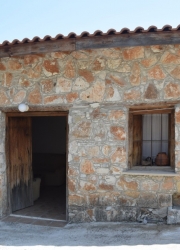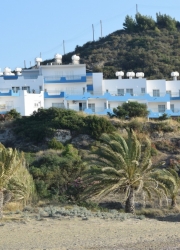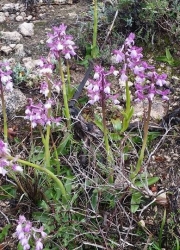History
The community of Pigenia is located in the Tylliria area, which is the mountainous peninsula of Cyprus towards the northwestern part of the island and in between the Chrysochous Bay and the Morfou Bay.
The morphology of the ground is steeply mountainous with an altitude that can reach 800 m although at a short distance from the beach.
The community of Pigenia of the Nicosia District combines mountainous and beach sceneries with a majestic and panoramic view and it is located approximately 75 km from Nicosia, 85 km from Pafos and a 55-minute drive from Polis Chrysochous.
Naming
According to the Great Cyprus Encyclopedia, the village was named by a bush known as “pianon” or “piganon” (peganum harmala), which is a medicinal and dye plant flourishing in the area.
The area of Tylliria is in fact the blessed land of Agia Eleni. According to tradition, the residents of Tylliria were transferred by Agia Eleni.
Next, traditions related to Agia Eleni were replaced by traditions related to Virgin Mary, stating that the graceful icon of Panagia Eleousa of Kykkos arrived in the area in a royal procession at which time it was permanently placed at the location where it is found today in Kykkos. According to tradition, during the procession of Panagia’s icon to Kykkos, the pines bowed out of respect, something which is still evident today.
However, the residents also believe that Virgin Mary arrived there herself and evidence which exists even today justifies the residents’ claims.
West of the area there is a location called “Moutti tou Ammou”.
According to tradition, while Virgin Mary was entering the area, she was followed by the sand of the seas. When Virgin Mary sat to take a rest she blessed the sand which has since then remained still, up until today, forming what today is known as the sand hill.
Another tradition reports that a fountain known by the naming “Panagia tou Apparou” is found within the administrative boundaries of Pigenia, at the location Kanna. At that location one can see the footprint of a horse that was used by Panagia while crossing the area to head to her “throni”, the throne peak.
Moreover, Virgin Mary’s fountain, which is located somewhere between Limnionas and Mansoura, is also mentioned as part of tradition. In particular, when Virgin Mary came to shore she was thirsty and hit the rock with her hand, causing water to pour out of it, which she drank to satisfy her thirst, while her hand print is still visible even today.
The history of the area of Tylliria doesn’t stop here. It continues with days of glory, but also with days of destruction.
The community of Pigenia was one of the communities which was brutally struck by the Turkish bombings, the battles of 1964, as well as the invasion of 1974 by the Turks.
In fact, the community suffered a major blow since a lot of residents abandoned the area and moved to other parts of Cyprus in search of a better future.
Population
The populating course of Pigenia from 1891 to 1931 followed an upward trend. In the years 1946, 1960 and 1982 the population numbers were recorded including the population of the neighbouring village of Chaleri.
| Year | Numbers of Residents |
| 1891 | 255 |
| 1901 | 292 |
| 1911 | 332 |
| 1921 | 308 |
| 1931 | 441 |
| 1946 | 588 |
| 1960 | 604 |
| 1973 | 521 |
| 1976 | 302 |
| 1982 | 297 |
| 2001 | 124 |
Today the community numbers 90 permanent residents, which during weekends and holidays its expatriates raise this number to more than 250 people.
Several expatriates have restored their old family houses maintaining their special picturesque character and the architecture of the traditional residence.
Pigenia is an area with a lot of potential for development. In the future, the area will present a significant tourist and land development.
Churches
At the village there are two churches, one of which is dedicated to Agios Charalampos and the other one to Agia Marina. More: Churches
Professions
According to Karouzis, several residents of the village dealt with the production of coal and live-stock breeding for years, which is revealed by the cut tree trunks in the forest and the lorries in the area.
Sources:
Giorgos Karouzis, Strolling around Cyprus, Nicosia, City and District, 2002, Great Cyprus Encyclopedia.






Projects
Projects Completed
  | Back to collection |
Planned Projects
- Reformation of the OMEGA A1 and A2 beach
- Renovation of the Community Council’s building
- Construction of a garage and storage rooms to cover the needs of the Community Council
- Road broaching and official registration of roads within the community
- Broaching of Agios Ioannis’ registered road
- Construction of two bus stops
- Partial Replacement of the water supply network
- Nature Trail
- Reformation of the community’s square
- WiFi installation in the community
- Establishment of a Branch of the Cyprus Science and Research Centre (CSRC) of the University of Cyprus and its partners.
- Lining of various retaining walls within the community with local stone
- Formation of the Pigenia cemetery

Square
Primary school
  | Back to collection |
Natural Environment and Wildlife
































